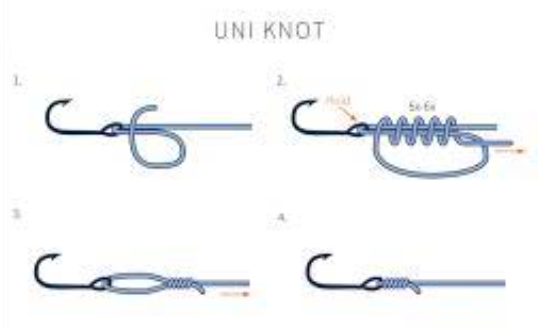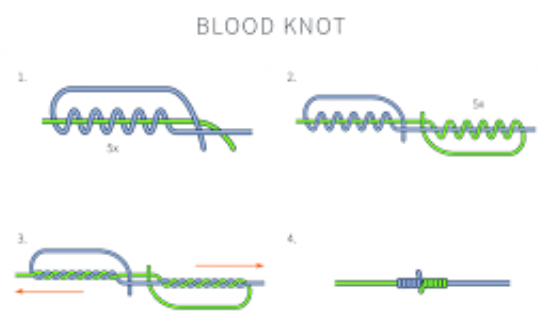Mastering the Art of Knot Tying: A Fisherman's Guide
Dec 1st 2023
Before delving into the art of knot tying, let's understand why it's crucial. A well-tied knot ensures that your hook, lure, or swivel stays securely attached to your fishing line, even when faced with the relentless pull of a feisty fish. Knots are your insurance policy against heartbreaks on the water.
1. The Improved Clinch Knot: A Fundamental Connection
How-to:
- Thread the end of the line through the eye of the hook.
- Make 5-7 wraps around the standing line.
- Pass the tag end through the loop near the eye of the hook.
- Thread the tag end through the loop created by the wraps.
- Wet the knot before tightening to reduce friction.
The Improved Clinch Knot is your go-to for attaching lures, hooks, or swivels to your fishing line. It's strong, reliable, and easy to tie, making it an essential knot for anglers of all skill levels. (image The Knots Manual)

. Palomar Knot: The Strength in Simplicity
How-to:
- Double about 6 inches of the line and pass it through the eye of the hook.
- Tie a simple overhand knot, creating a loop.
- Pull the loop over the hook, ensuring it is snug but not tight.
- Pull both ends of the line to tighten the knot.
The Palomar Knot is celebrated for its strength and simplicity. It retains nearly 100% of the line's original strength, making it an excellent choice for securing terminal tackle. (image Fishing.org)

3. Uni Knot: Versatility Unleashed
How-to:
- Pass the line through the eye of the hook, creating a loop.
- Wrap the tag end around both lines 5-7 times.
- Pass the tag end through the loop above the eye of the hook.
- Moisten the knot and pull both ends to tighten.
The Uni Knot is a versatile knot that excels in connecting lines of different diameters. It's not just for terminal tackle – use it to join lines for added strength and length. (image Fishing.org)

4. Blood Knot: Seamlessly Joining Lines
How-to:
- Overlap the ends of the two lines you want to join.
- Wrap one end around the other 5-7 times.
- Thread the end through the loop created between the two lines.
- Repeat the process with the other end.
- Moisten the knot and tighten it by pulling both ends.
The Blood Knot is your solution for seamlessly joining two lines. It's popular among fly fishermen but is equally effective in various fishing scenarios. (image Fishing.org)

Tips for Knot Tying Success:
- Practice Makes Perfect: Before hitting the water, practice tying knots at home. Familiarity breeds confidence.
- Use Quality Line: The strength of your knot is only as good as the line you're using. Invest in high-quality fishing line for optimal performance.
- Keep it Tight: Always ensure your knots are tight and secure. A loose knot is an invitation for disappointment.
In Conclusion: Knot Tying as an Art Form
As you venture into the fishing world, consider knot tying not just a skill but an art form. It's the silent conversation between you and the fish, the unspoken agreement that ensures your connection remains unbroken. Master these knots, and you'll find a newfound confidence in every cast. So, tie on, cast out, and let the dance begin. Happy fishing!
